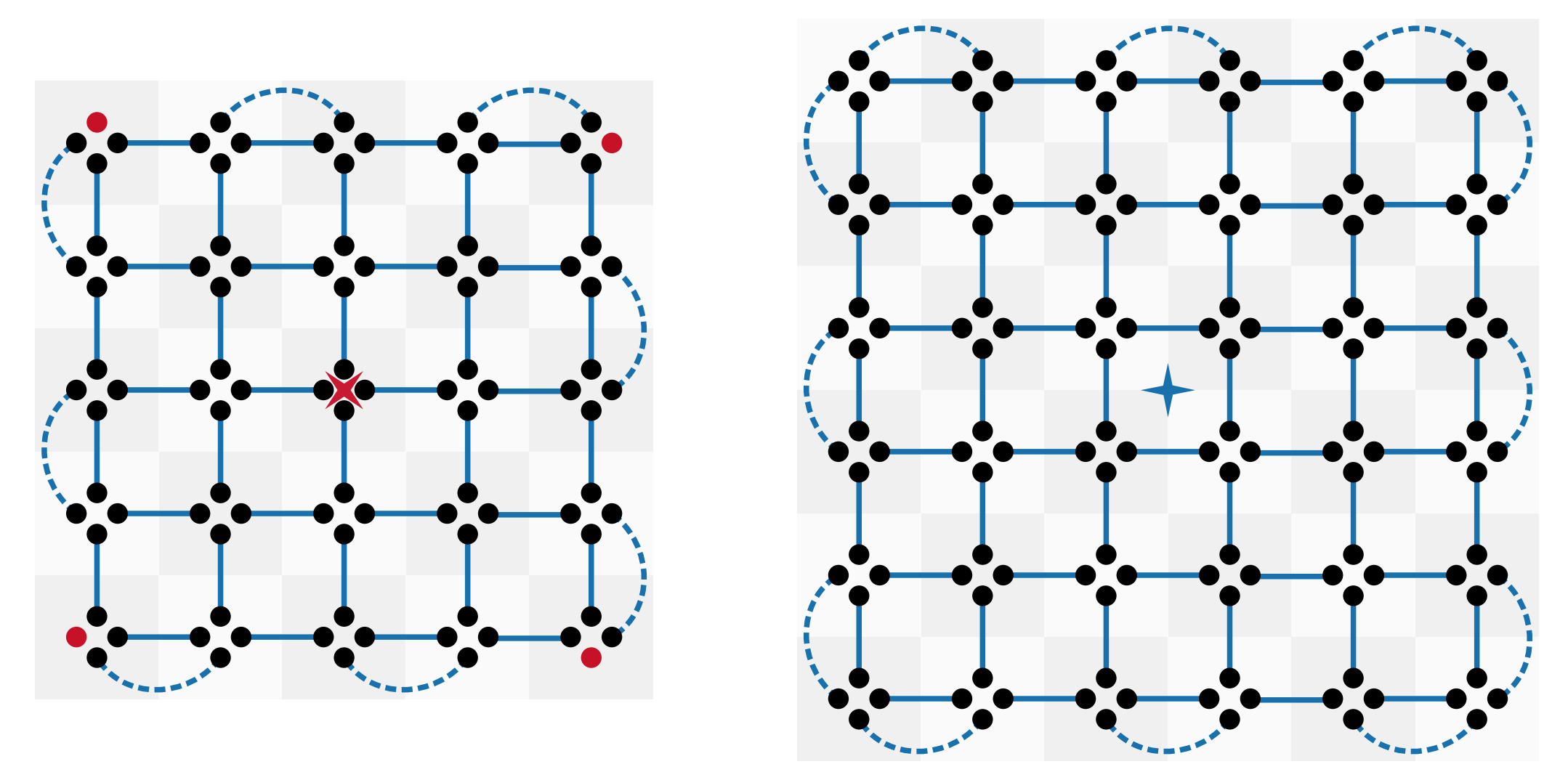
My first paper is live on arXiv:1912.06609!
In it, we derive what the topological invariants of a 2D rotationally symmetric superconductor have to be to get corner modes on the boundary. This is done by seeing what the symmetry indicators in the bulk imply for an edge theory that exists on the border of two inequivalent phases.
We start by discussing \( C_4 \) symmetry but extend this to the other crystalline rotations. The index in this case is \[ \Upsilon_{\mathbf{0}}^{(4)} = \frac{1}{4}\left(\Delta[M_{1}]+3\Delta[M_{2}]-2\Delta[X]\right)\ + \frac{1}{2\pi} \Delta \mathbf{G}_{\nu} \cdot \mathbf{c} \mod 2. \]
Click on the paper to find out what all these symbols mean!
This work was completed under the supervision of Jan Behrends and Benjamin Béri. The abstract is copied and pasted below:
Two-dimensional second-order topological superconductors host zero-dimensional Majorana bound states at their boundaries. In this work, focusing on rotation-invariant crystalline topological superconductors, we establish a bulk-boundary correspondence linking the presence of such Majorana bound states to bulk topological invariants introduced by Benalcazar et al. We thus establish when a topological crystalline superconductor protected by rotational symmetry displays second-order topological superconductivity. Our approach is based on stacked Dirac Hamiltonians, using which we relate transitions between topological phases to the transformation properties between adjacent gapped boundaries. We find that in addition to the bulk rotational invariants, the presence of Majorana boundary bound states in a given geometry depends on the interplay between weak topological invariants and the location of the rotation center relative to the lattice. We provide numerical examples for our predictions and discuss possible extensions of our approach.